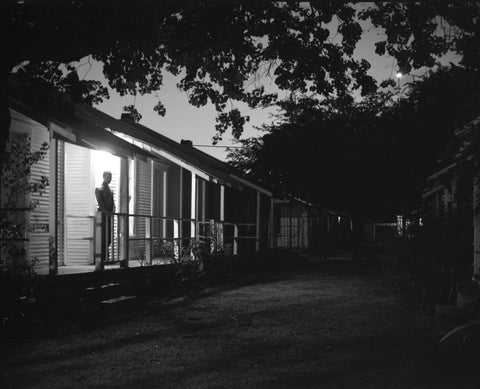
Still from General Electric Predix TV Commercial “BrainDrone,” 2016
Several years ago, General Electric ran a TV commercial titled “BrainDrone.” It takes place at a high-tech job fair. A young woman is manning a booth for BrainDrone—a drone you control with your brain. She explains: “It’s a drone you control with your brain, which controls your thumbs, which control this joystick.” Buried in this joke is a kernel of insight into what it means to master a discipline. If she actually masters the use of the joystick, to the point to where its use is integrated into her understanding; to the point where she has developed a muscular understanding, which is the product of hours of practice; to the point where she envisions the drone moving up and to the right and then makes it happen seemingly without thought, in this sense, she is controlling the drone with her brain. This envisioning is what Edward Weston meant when he wrote that “One must prevision and feel, before exposure, the finished print—complete in all values, in every detail—when focusing upon the camera ground glass.” I believe he saw this the way a sports coach would use “imaging.” To shoot a free throw in basketball involves muscles from the toes to the fingertips. There is no way the player can consciously control all of the muscles involved. Coaches use the mental image of the ball going in the hoop as a way of coordinating all of the muscular activity. And if the player has innate ability and has spent so many hours practicing that they have ingrained, muscular understanding, the player can focus on the image and their body will do the rest. Likewise, a photographer who has spent years consciously examining how the world is translated by the camera into a photograph can use a mental image to coordinate all of the myriad decisions that go into organizing a picture.
Perhaps you’ve encountered the Chinese story of Prince Wen Hui’s Cook, attributed to the fourth-century BCE writer Zhuang Zhou. The Prince is watching his cook butcher an ox and asks him how he developed such skill. Ting, the cook, replies:
All I care about is the Way, which goes beyond skill. When I first butchered oxen, all I could see was the ox itself. After three years I no longer saw the whole ox. Now I go out to meet it with my whole spirit and don’t think only about what meets the eye. Sensing and knowing stop. The spirit goes where it will, following the natural contours, revealing large cavities, leading the blade through openings, moving onward according to actual form—yet not touching the central arteries or tendons and ligaments, much less touching bone.
In a sense, Ting is saying that he’s cutting with his mind. And, not unlike the BrainDrone woman, his mind controls his hand and his hand controls the knife.

Ike No Taiga, Zhuang Zi dreaming of a butterfly, 1700s
As I typed the line, “After three years I no longer saw the whole ox,” I recalled that a photographer using an 8x10 camera never sees the whole picture on the ground glass. With a 4x5, you can stretch your arms to hold the dark cloth and stand back far enough to see the whole frame. But you never can back up far enough with an 8x10. This raises the question of how the image will be structured. Because you can’t see the whole frame, sometimes the result is disordered and seems almost schizophrenic—decisions, made without reference to each other, bouncing off each other in the same picture space. Sometimes photographers hold the picture together by imposing an order—something from outside the image constraining it. And sometimes, like Ting the cook, they see the interstices of the image and trust their internal unity to unify the picture.

Stephen Shore, Thirty-First Avenue and Crescent Street, Queens, New York, October 28, 1974
Excerpt from Modern Instances: The Craft of Photography (2022) by Stephen Shore.

Silkscreen printed linen hardcover
February 2022
€38 £30 $45





